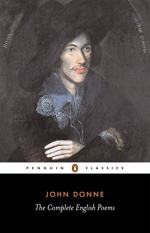|
This section contains 359 words (approx. 1 page at 400 words per page) |

|
Sappho to Philaenis (Poem) Summary & Study Guide Description
Sappho to Philaenis (Poem) Summary & Study Guide includes comprehensive information and analysis to help you understand the book. This study guide contains the following sections:
This detailed literature summary also contains Quotes and a Free Quiz on Sappho to Philaenis (Poem) by John Donne.
The following version of this poem was used to create this guide: Donne, John. "Sappho to Philaenis." John Donne's Poetry (Norton, 2007).
Note that parenthetical citations within the guide refer to the lines of the poem from which the quotations are taken.
John Donne is perhaps one of the most thoroughly studied poets of the early modern period. Most of his work was published posthumously after Donne died in 1631, but his poems are known to have circulated in manuscript among small circles of readers, called coteries. Donne is famously a representative of the metaphysical movement within English poetry, which is usually defined by an interest in extended metaphors, paradox, and intellectual subject matter. Many have argued that the trajectory of Donne's poetry reflects shifts in his personal life: his earlier poetry, written when Donne was a lawyer at the Inns of Court, is often fraught with motifs of eroticism, sexuality, and wit. Later, however, when he became Dean of Saint Paul's, his poems were markedly more solemn and spiritual in subject matter, often replacing (or conflating) erotic love with divine love.
"Sappho to Philaenis" is an example of a poem from Donne's early career. It is an imitation of a similar poem rom Ovid's Heroides, a text composed of 15 epistolary poems about famous lovers, many of them gods and goddesses. However, one crucial difference exists between the two texts: in Ovid's "Sappho to Phaon," Sappho falls in love with the male Phaon, who rejects her, leading Sappho to kill herself out of grief. Donne's poem, by contrast, features a playful and contented Sappho who has fallen in love with the female Philaenis and is entreating her to reject erotic relationships with men. As such, many scholars have read Donne's poem as an example of autoeroticism, and more recently as a celebration of queer identity. While few are keen to argue that Donne's work is inherently "feminist," due to a number of examples of misogyny throughout his poetic repertoire, the speaker of "Sappho to Philaenis" ultimately argues that men are unnecessary and unsatisfactory while love between women is desirable precisely because of its matching like with like.
Read more from the Study Guide
|
This section contains 359 words (approx. 1 page at 400 words per page) |

|



